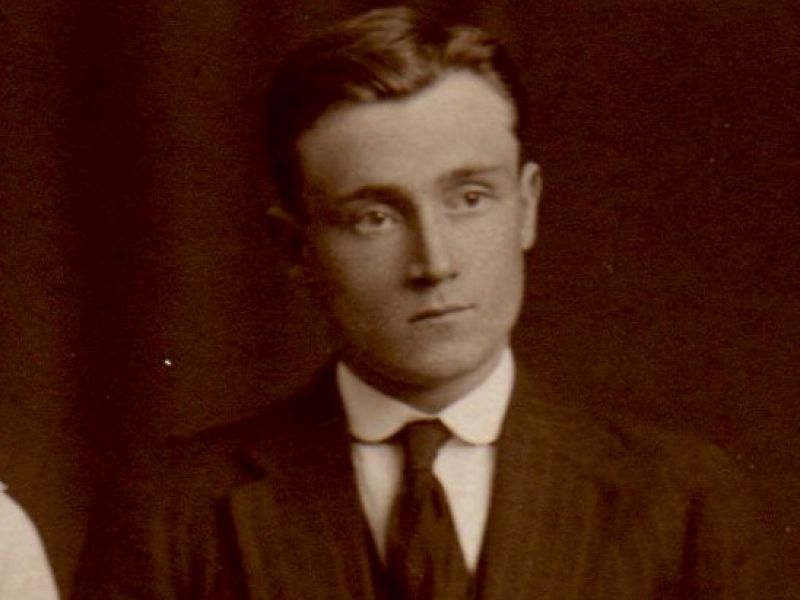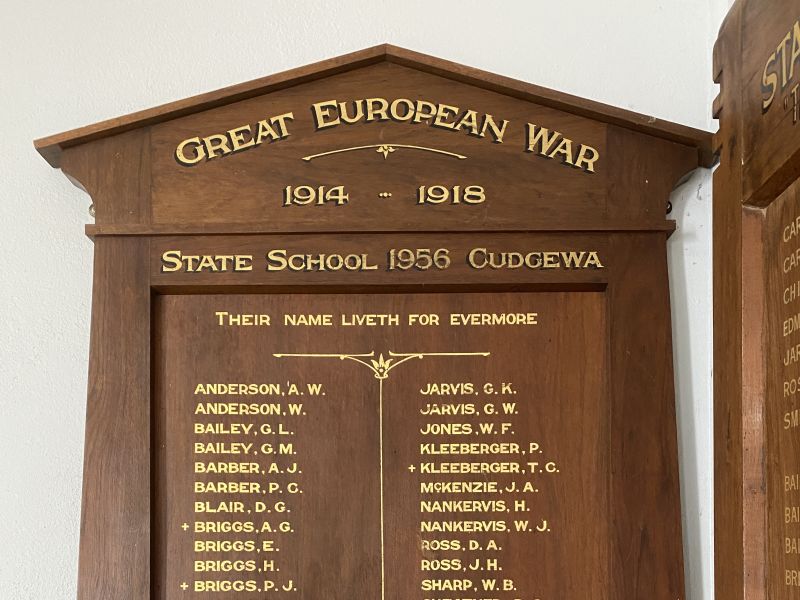Theodore Charles Kleeberger
Theo was born in September of 1893 in Corryong, Victoria. He was one of six children of Charles Julius Robert and Mary Annie (née Craig) Kleeberger. In 1898, Charles was named as the Registrar of Births and Deaths at Cudgewa, Victoria. Unfortunately, when was only eleven, Charles died of heart failure. That left Mary to raise the six children aged between seventeen and seven.
In 1905 Mary married Charles' younger brother, Theodore and the family moved to Melbourne, living at 75 Dryburgh St in West Melbourne. Theo gained employment as a labourer in the area for a period of time before taking on an apprenticeship as a blacksmith with the Wright Bros., product merchants of North Melbourne.
Two weeks after war had been declared, Theo walked up the steps of the Melbourne Town Hall to enlist. His Regimental Number of 450 indicates how early he joined up. He was placed into B Company of the 6th Battalion. After less than two months of initial training the battalion embarked on HMAT A20 Hororata on the 19th of October 1914 at the Port of Melbourne. They arrived in Egypt on the 2nd of December and spent the next few months training.
The 6th Battalion landed at Anzac on the 25th of April as part of the second wave. At some stage during the next few days Theo received a gunshot wound to his neck and arm. He was taken off the Peninsula and placed into a hospital ship which took him to Cairo. He was initially admitted to the No. 1 General Hospital on the 29th of April but was sent to No. 2 General Hospital the following day. Theo remained there until he was discharged to duty on the 1st of June 1915. Two weeks later he rejoined his unit which was in reserve at ANZAC due to the battalion 500 men below establishment.
From the 3rd to the 15th of July the battalion occupied the trenches adjacent to the 7th Battalion. It suffered 20 killed and 44 wounded as a result of shelling from large calibre guns. From the remainder of July they were once again placed in reserve.
On the 6th of August the battalion were issued orders to attack at midnight the German Officer’s Trench (so named because a German officer was once seen there) and to destroy Sniper’s Trench. At 1630 the Anzac artillery dropped a few shells on the German Officers Trench but no damage was done. The Turks replied by damaging the battalion’s trenches with fire from their 4.7” and 75mm guns. Engineers used explosive charges to break through the roofs of the trenches and entry tunnels. The fighting was chaotic. During the battle Theo was wounded in his hands by a bomb blast. He was evacuated from Gallipoli and admitted to the Elmo Valletta hospital in Malta. By this time his wounds had become septic. He died on the 18th of August 1915. In the group photograph, Theo is standing two places to the right of the soldier with his arm in a sling. He died a day or two after this photograph was taken.
Theo was buried at the Pieta Military Cemetery in Malta. He is also remembered on the Australian War Memorial Roll of Honour, the Cudgewa State School Honour Roll, and the Corryong War Memorial. For his service during the war he was awarded the 1914-15 Star, the British War Medal, and the Victory Medal.

 Stephen Learmonth
Stephen Learmonth
